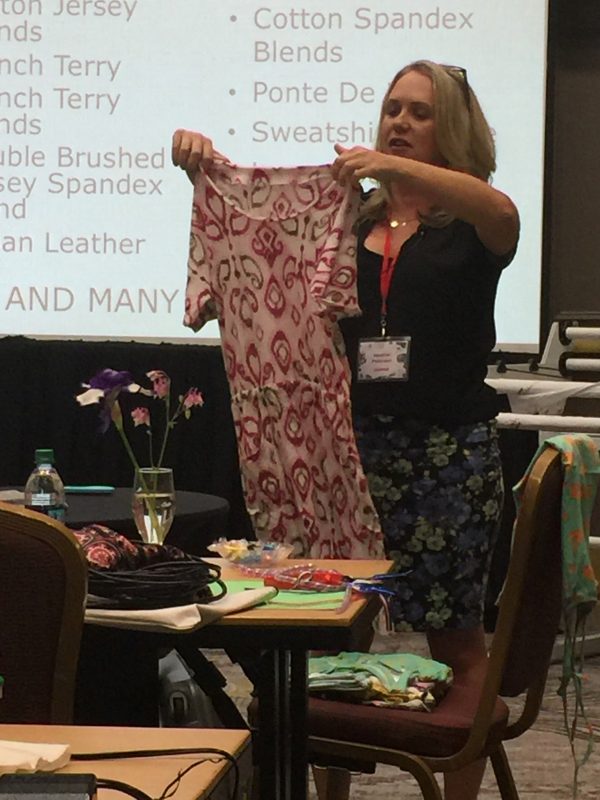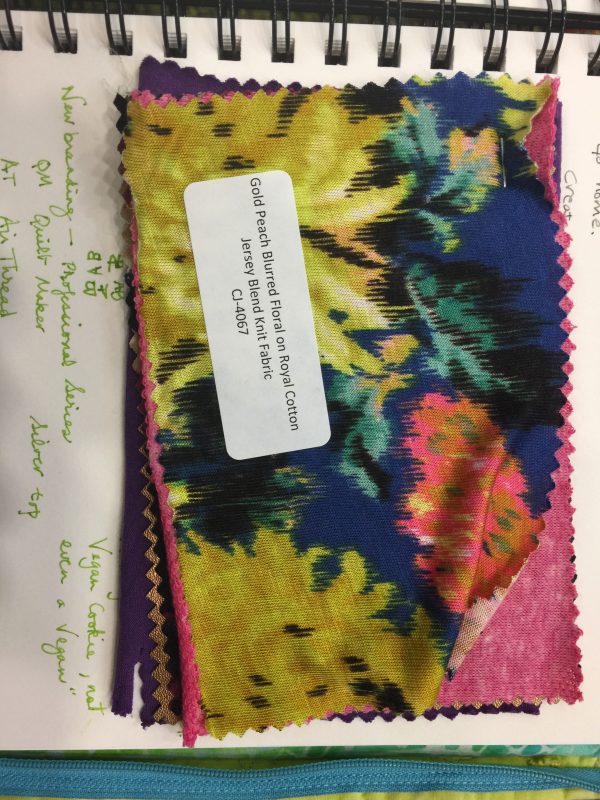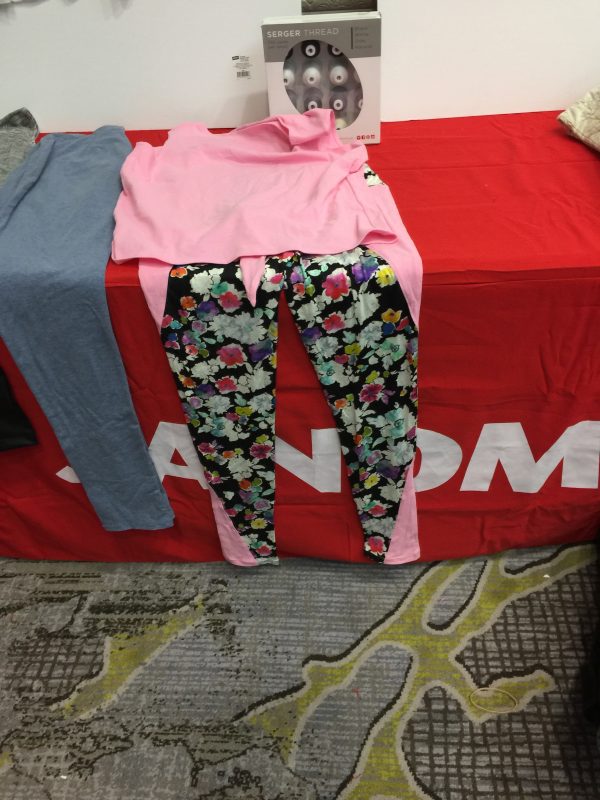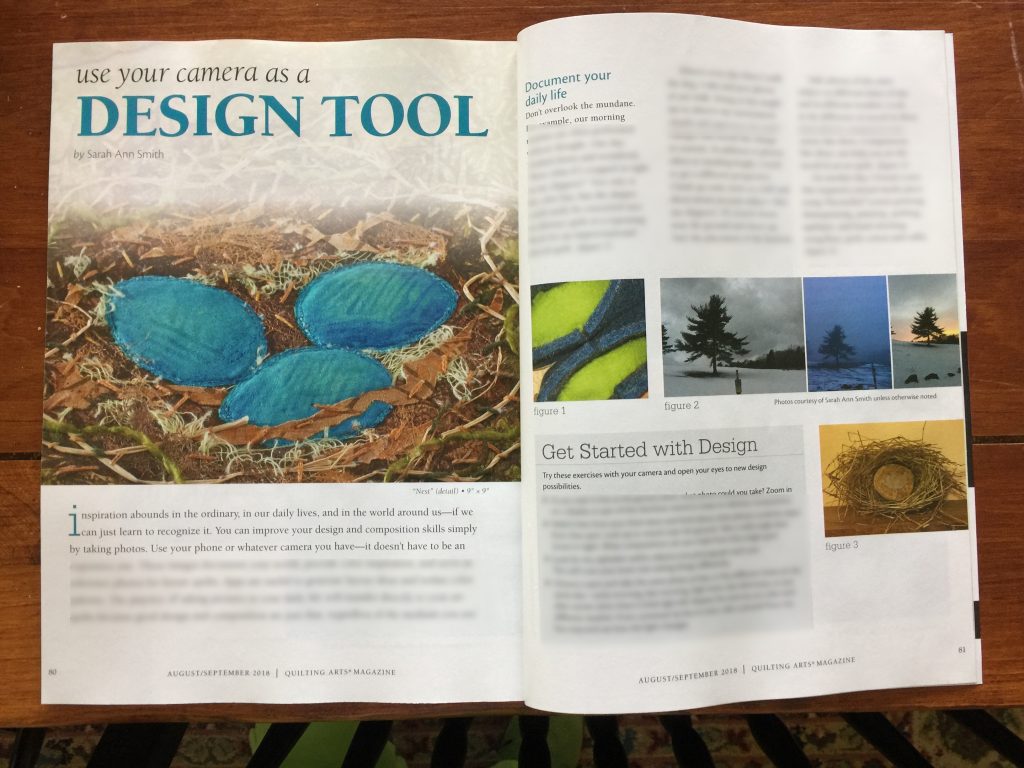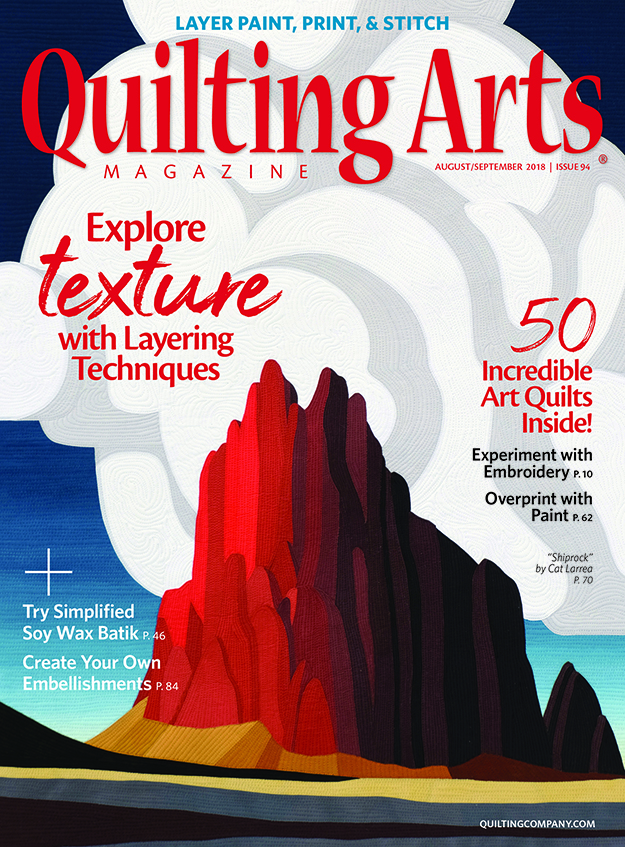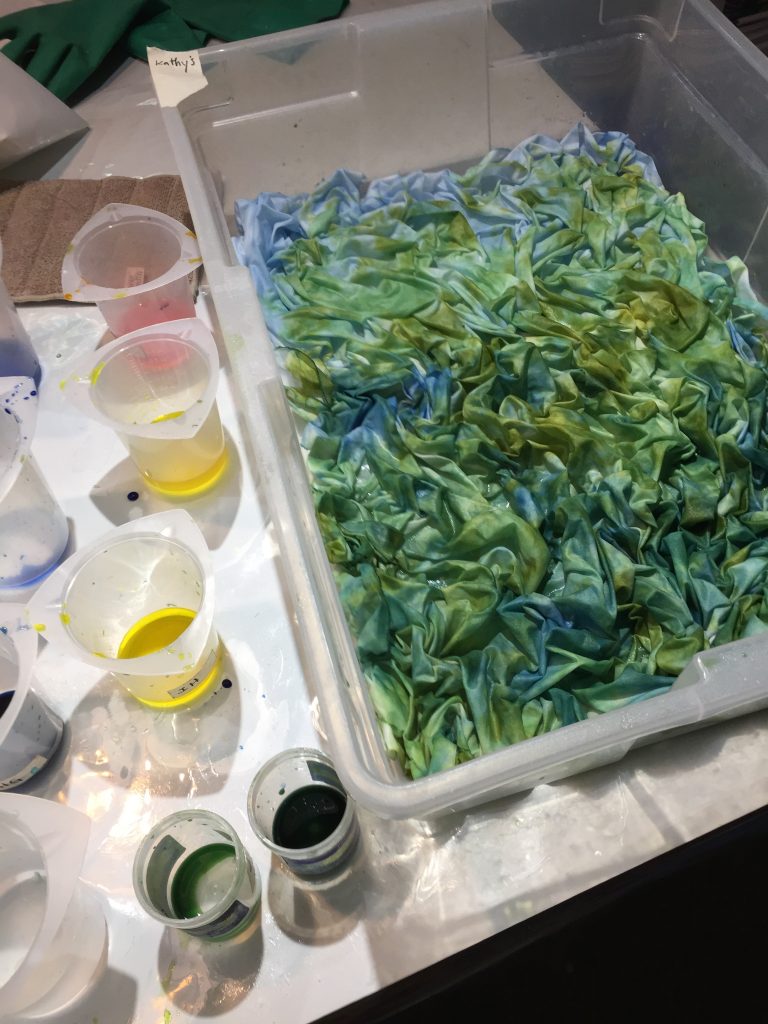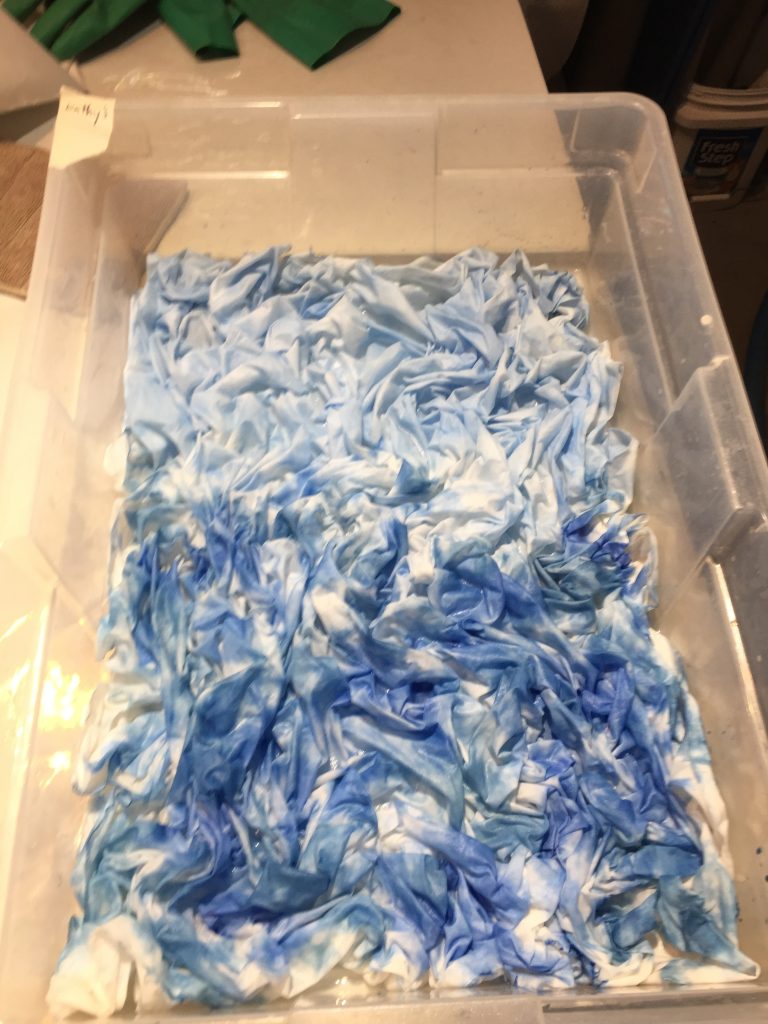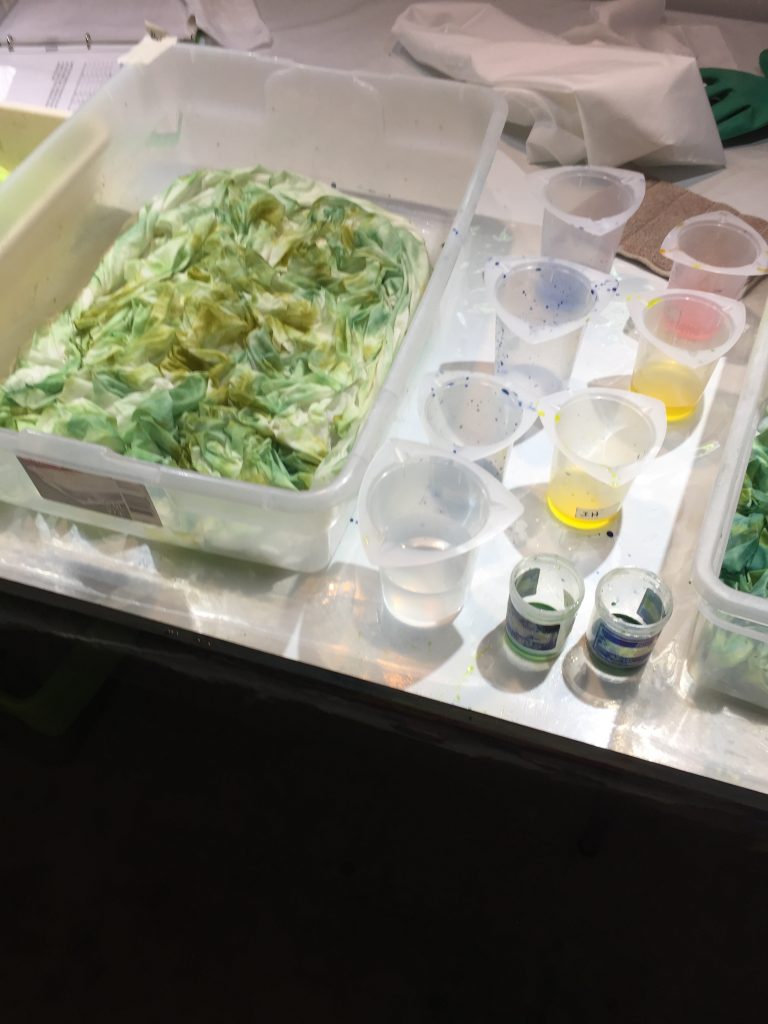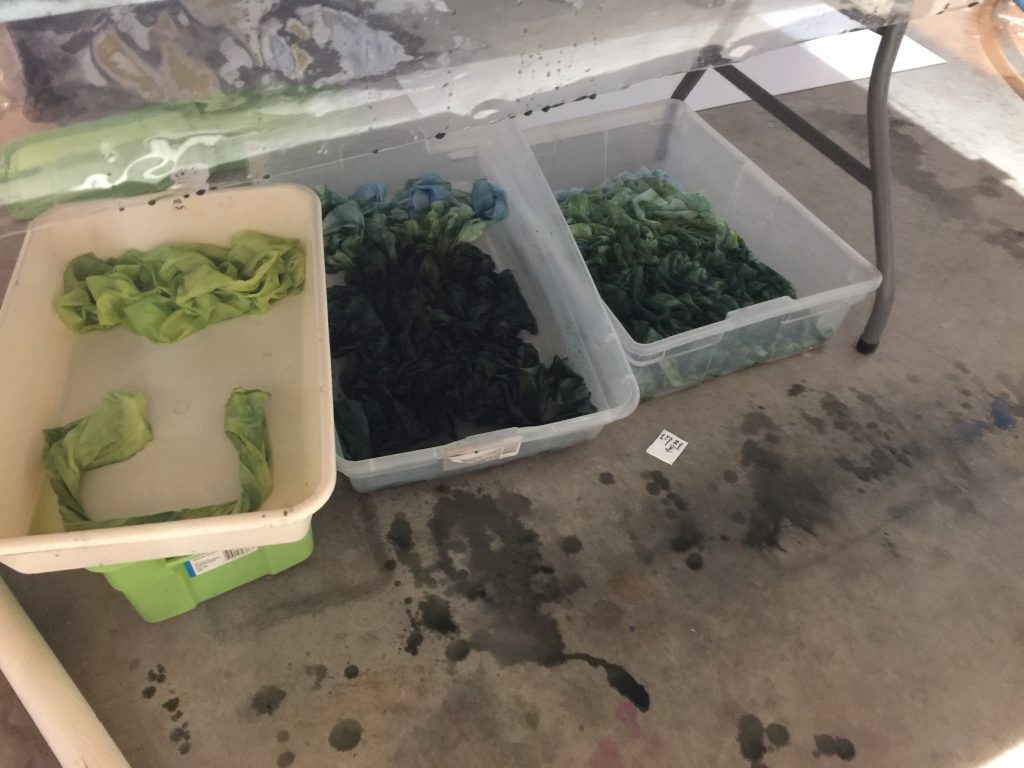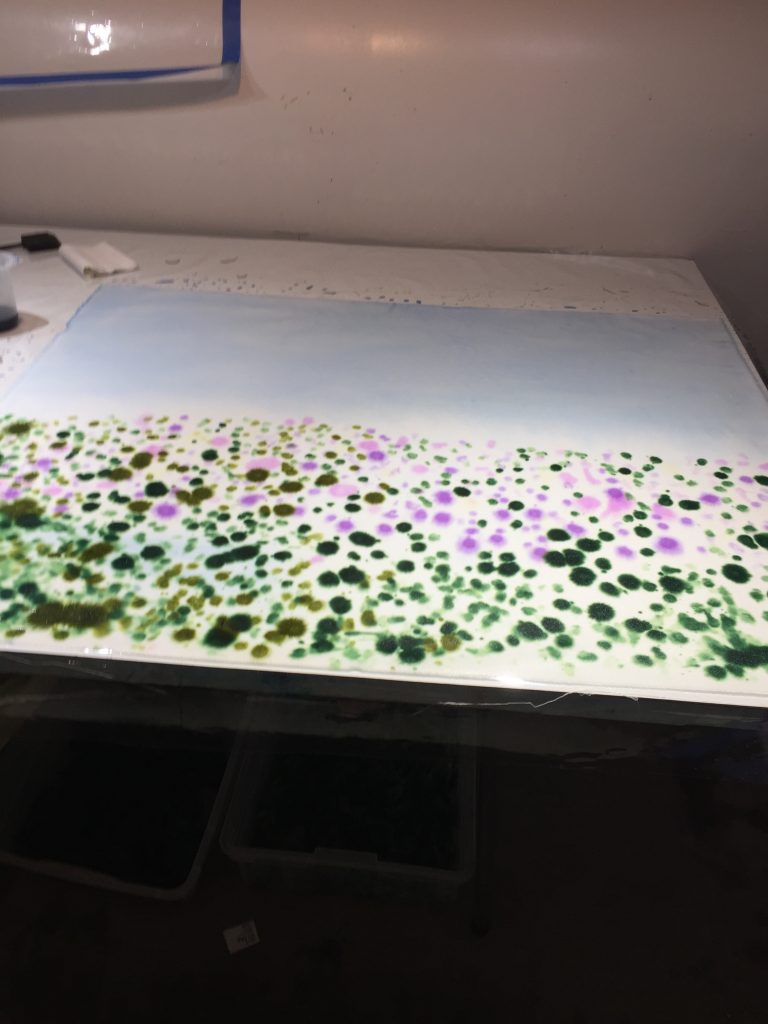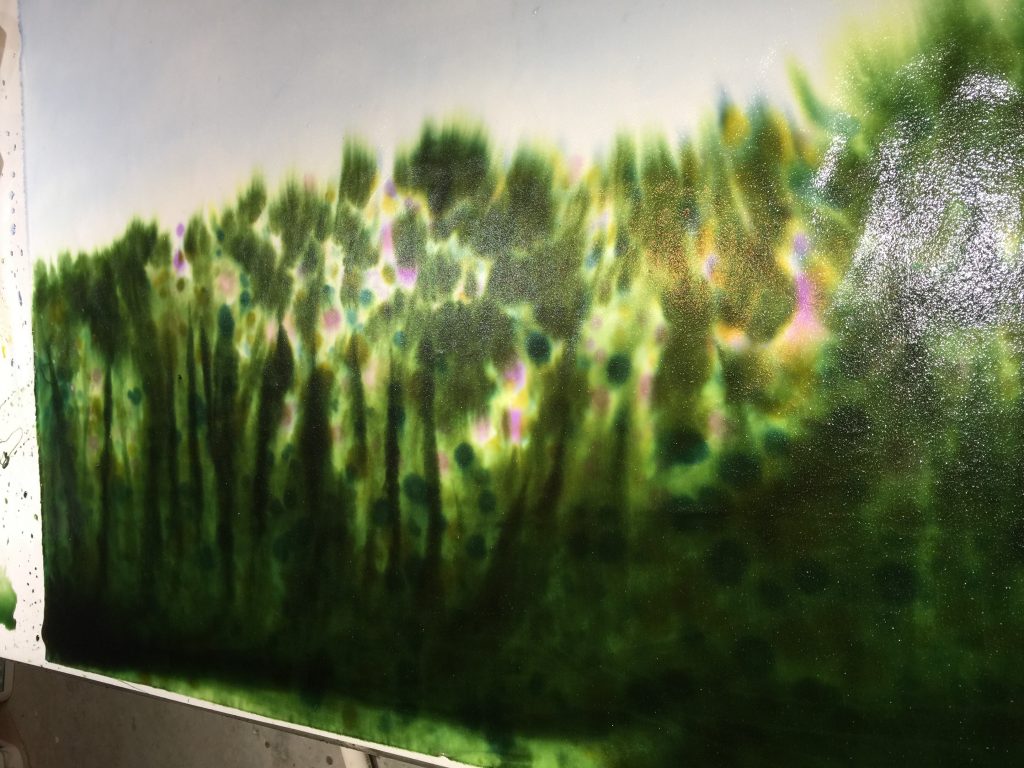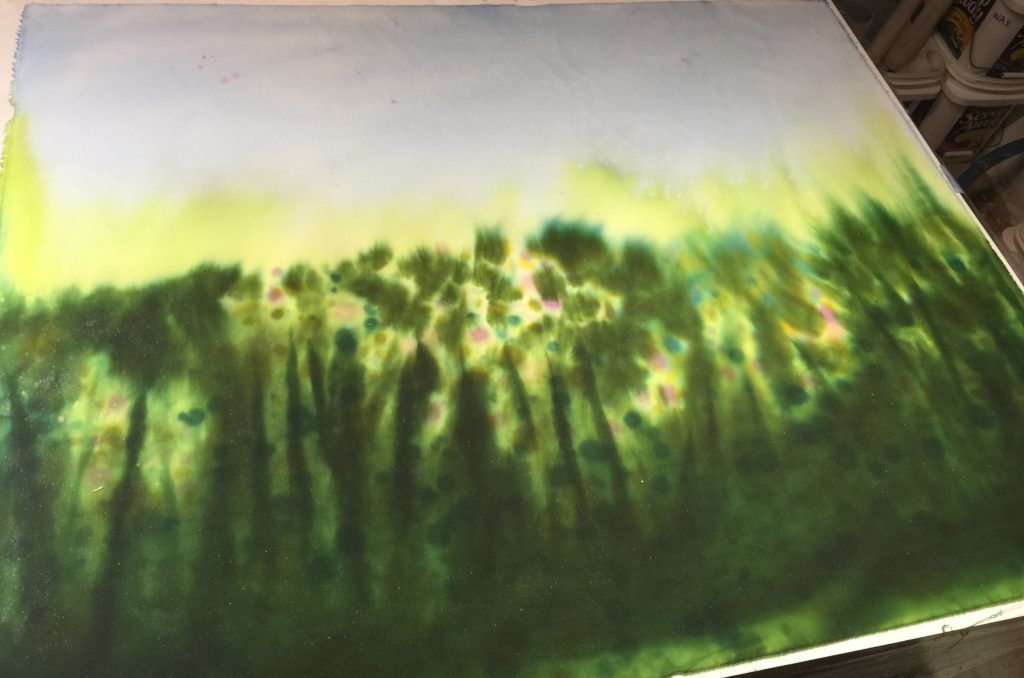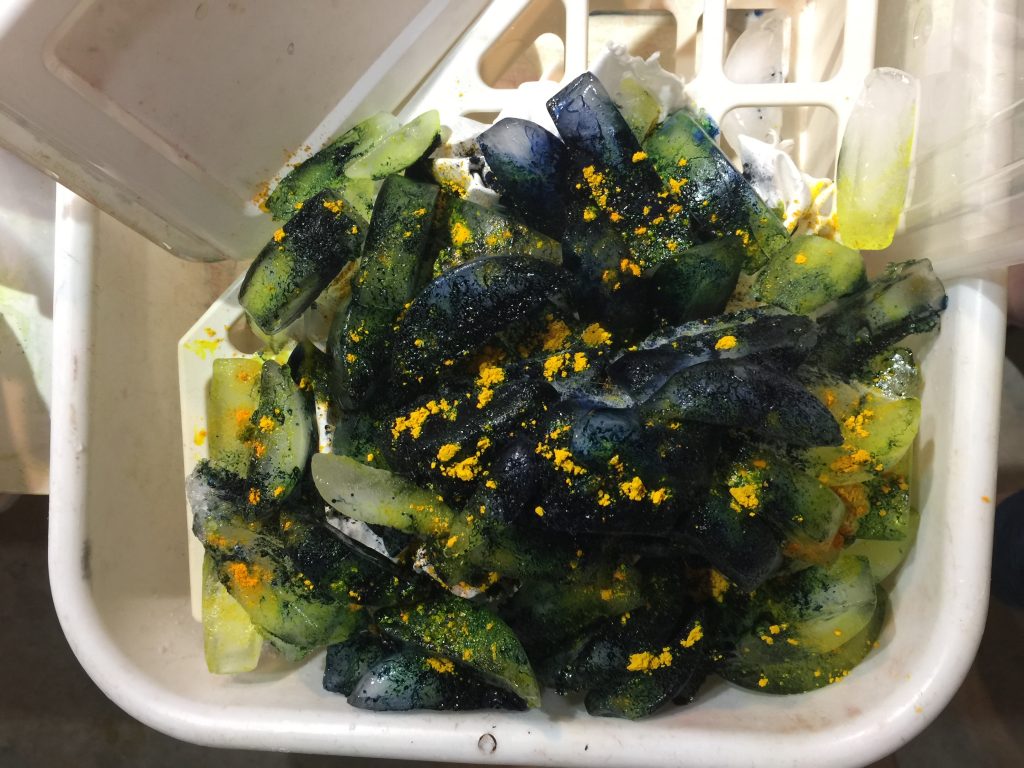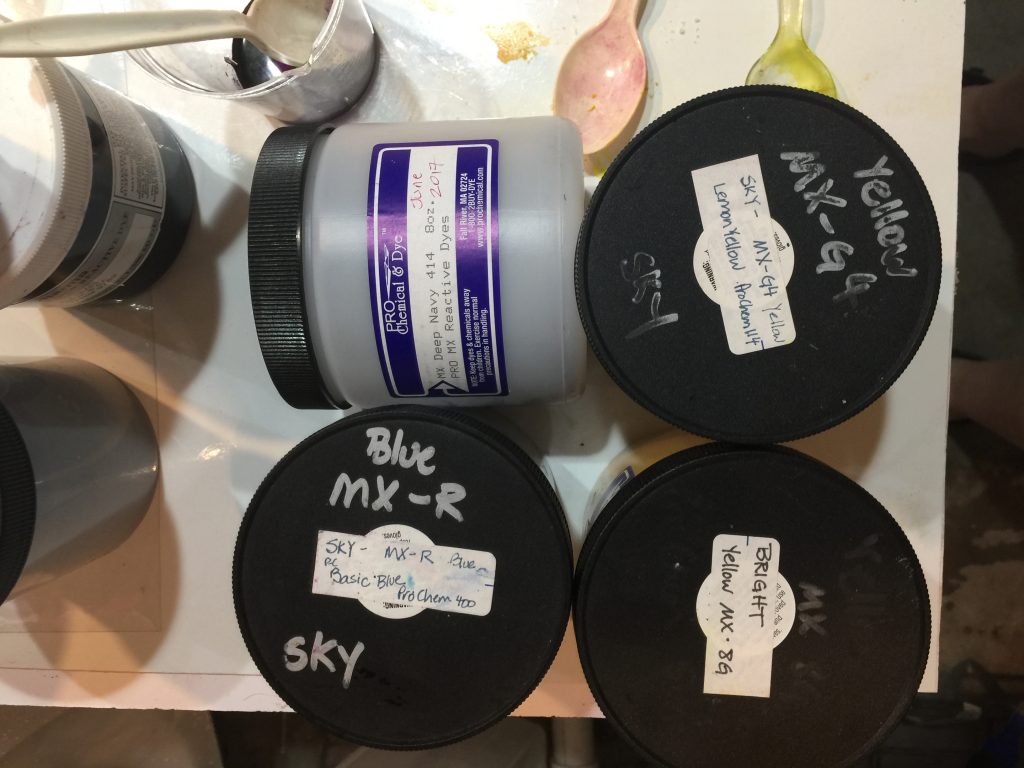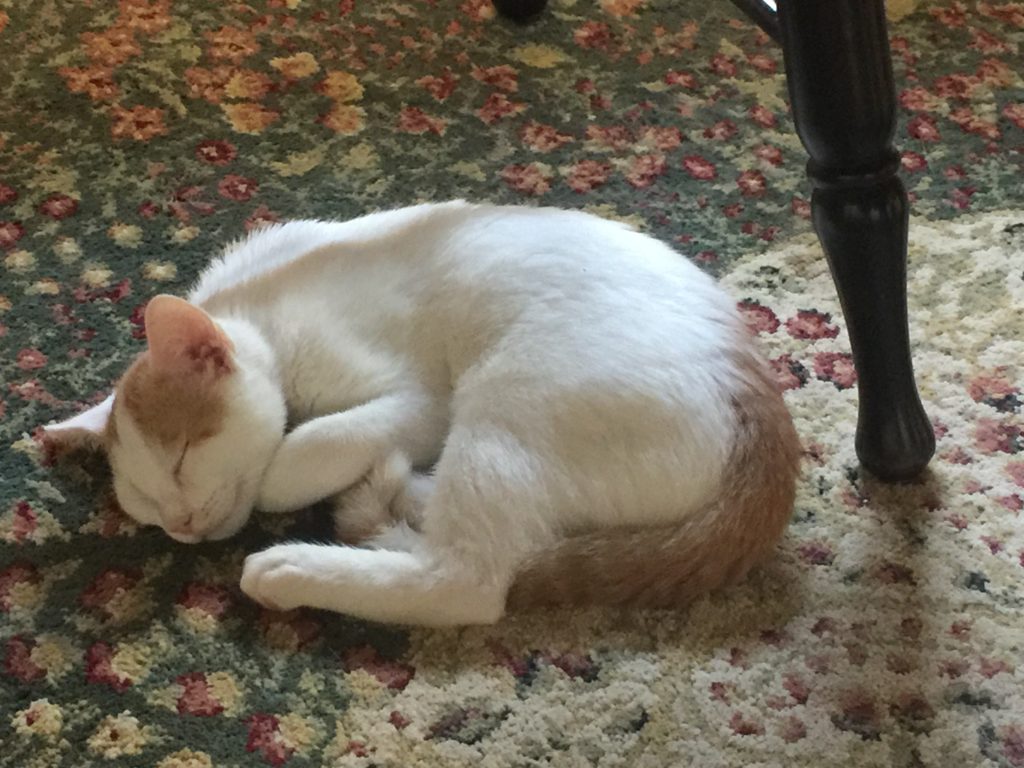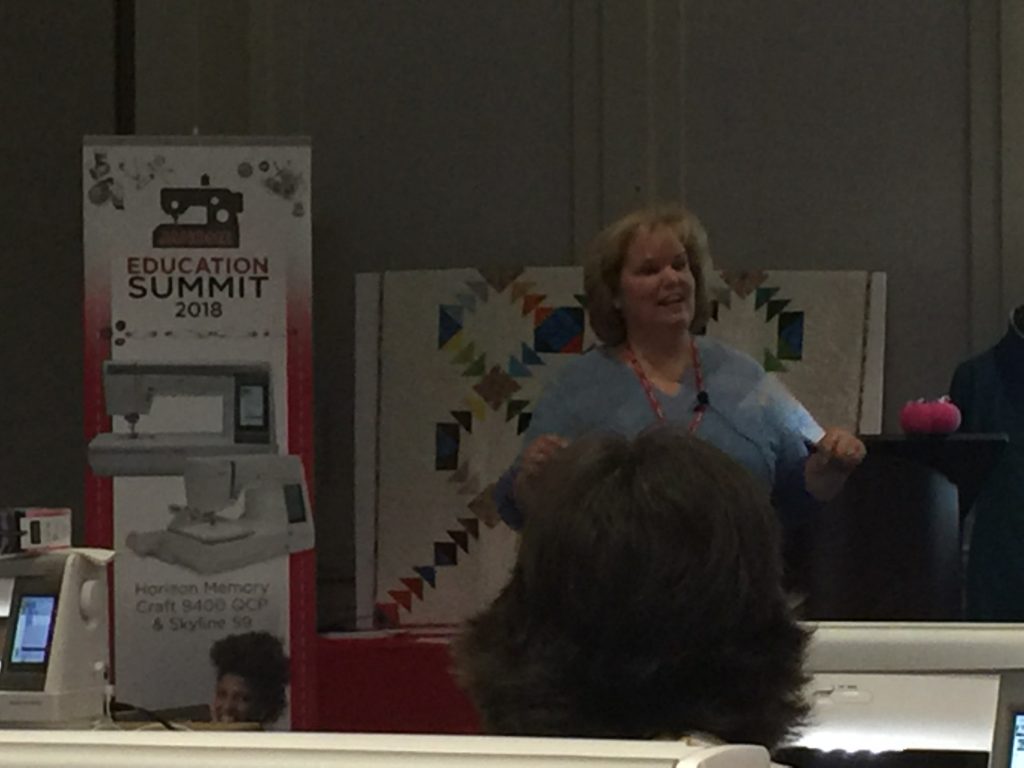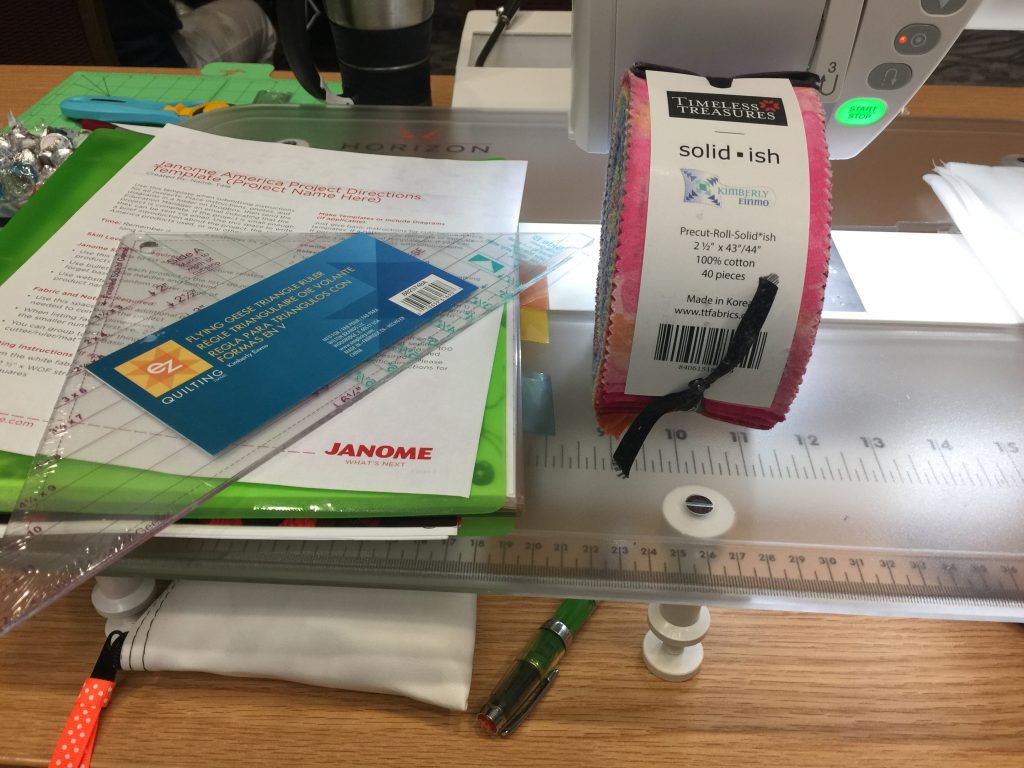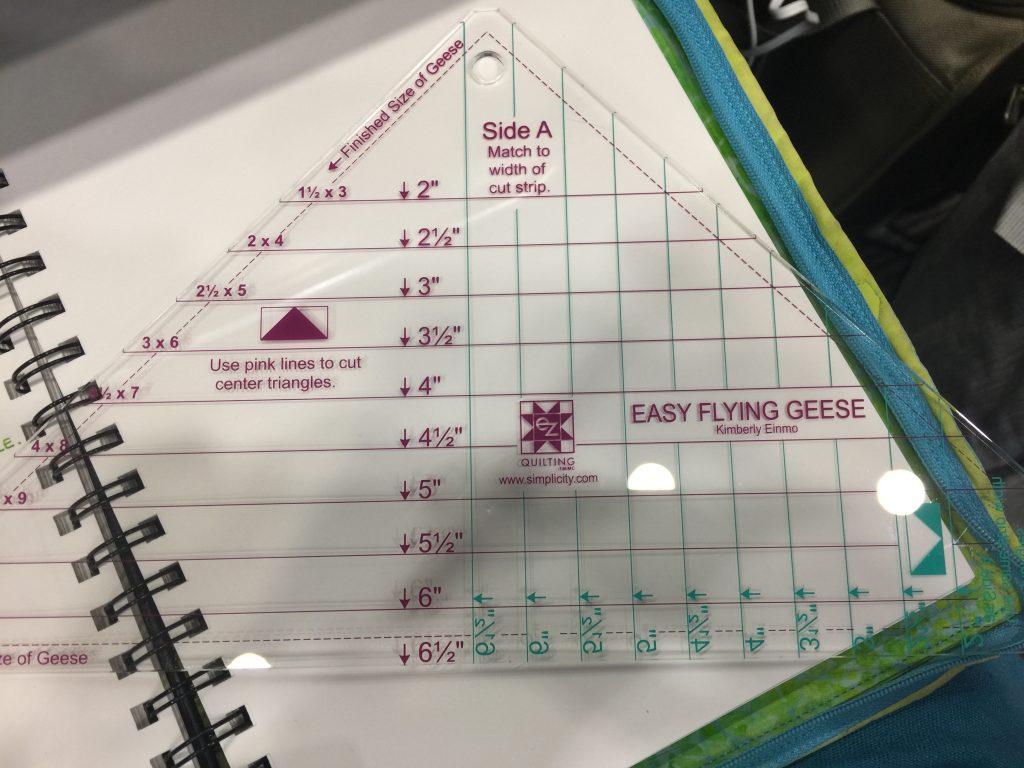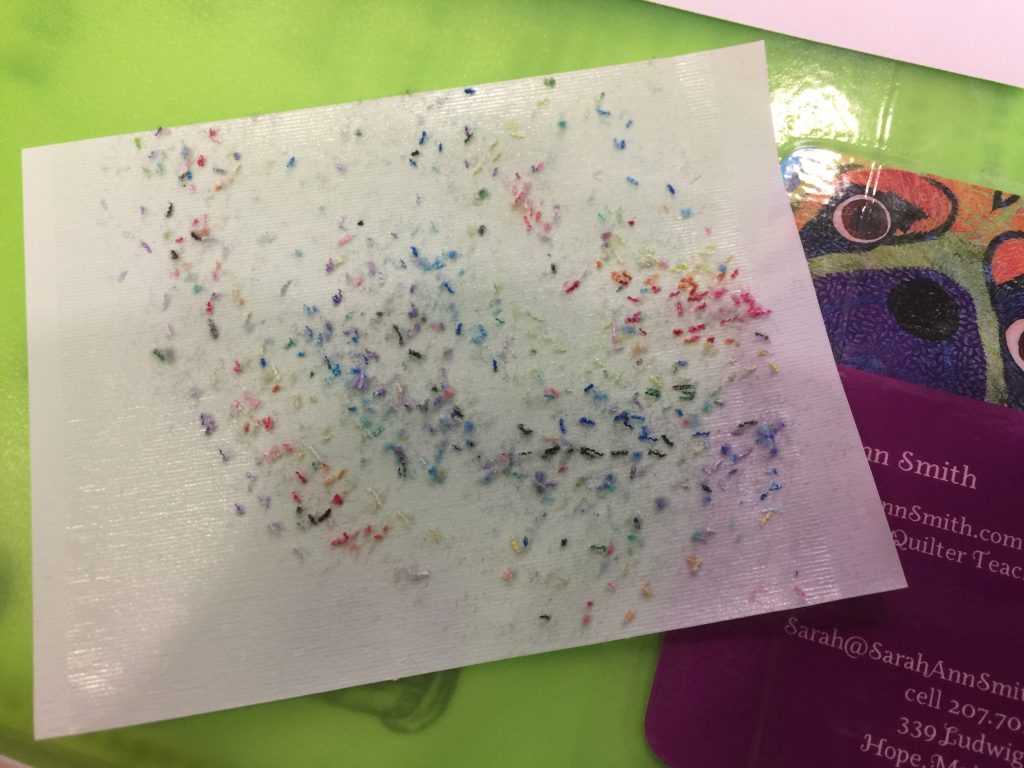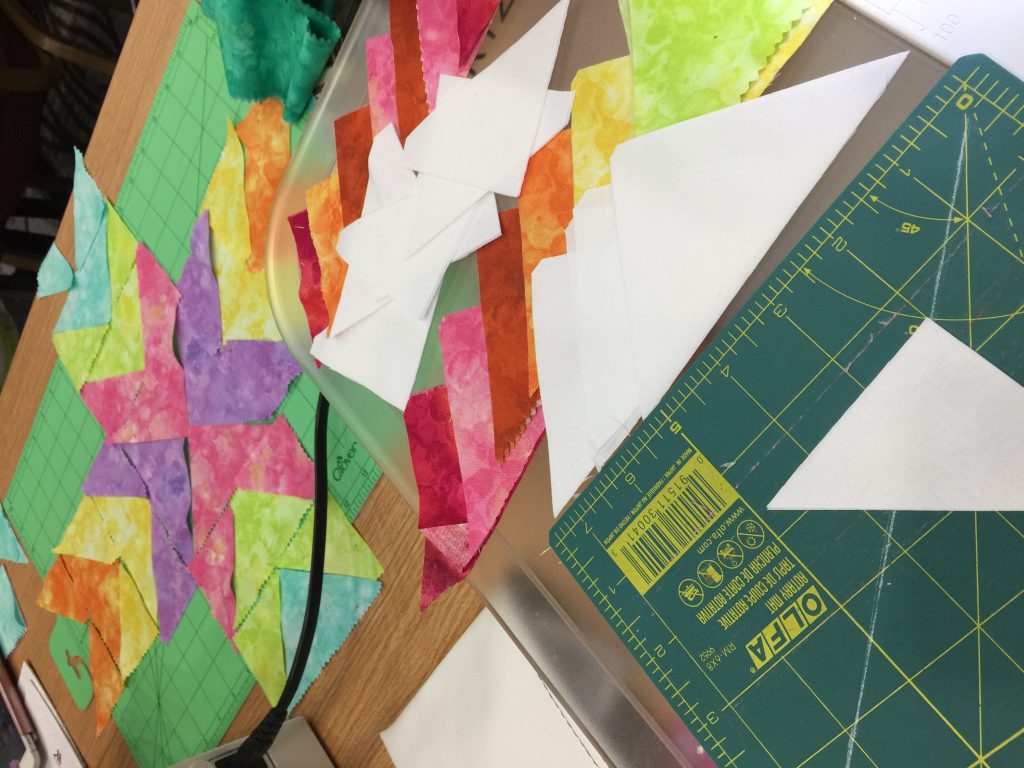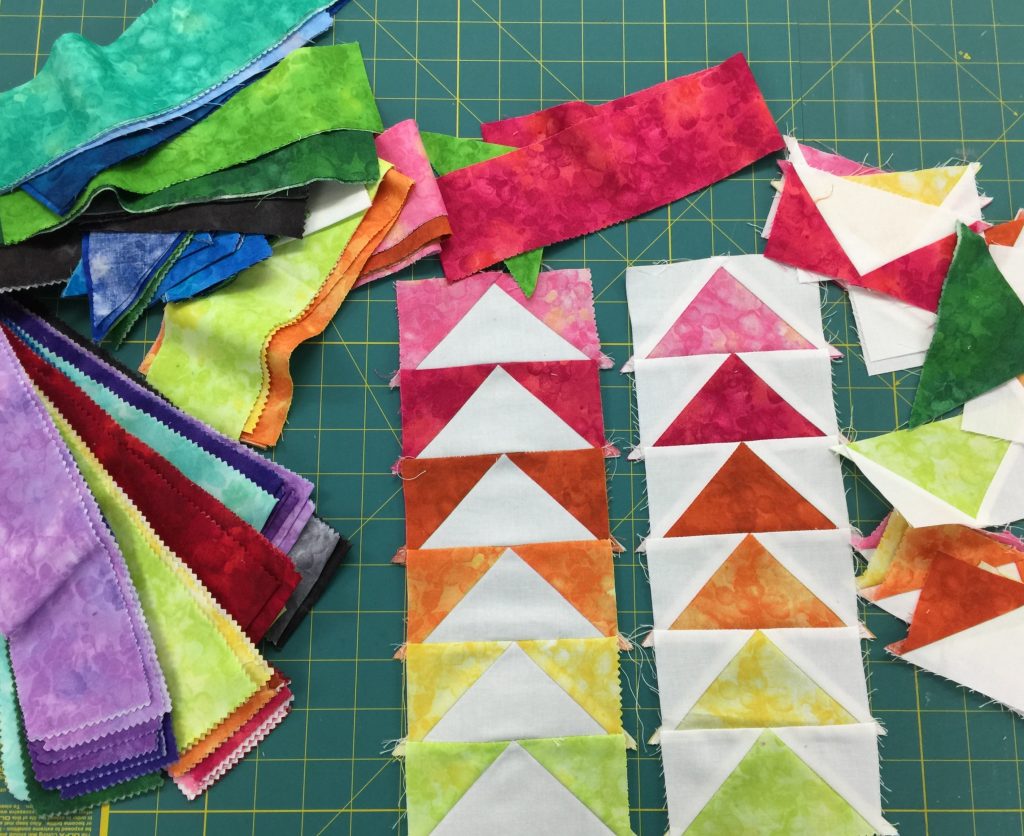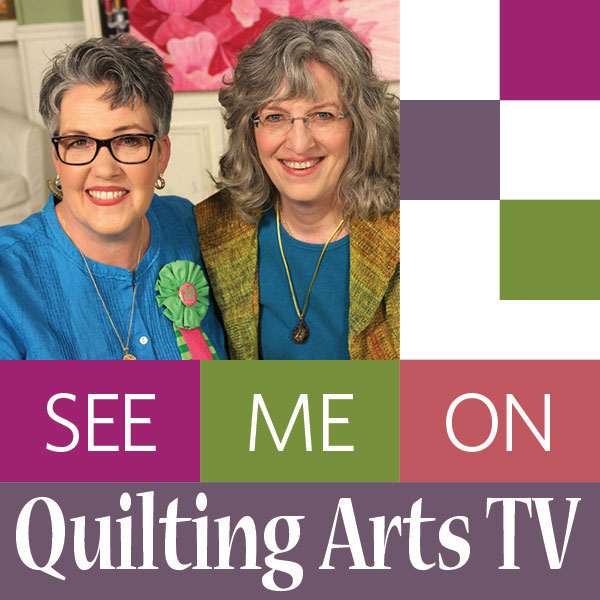Knits, Sergers, Cover Stitch machines, and more at Janome Education Summit 2018 Post #7
Thursday, July 12th, 2018Thursday was a whirlwind as we finished up at lunch time.
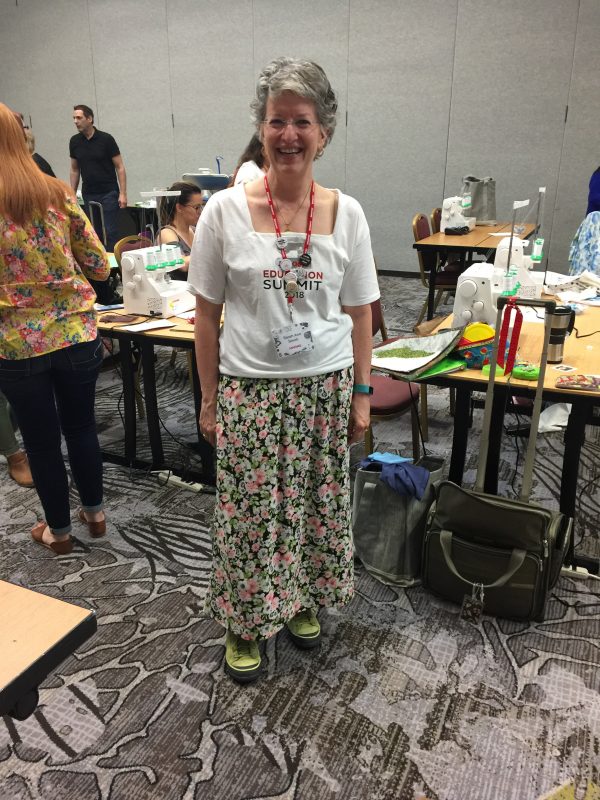
Me with my Summit t-shirt (we also did some iron-press decals…this was a basic shirt with an altered neckline also done at breakneck pace) with my skirt tucked underneath. Even my lime suede sneakers go with it!
In that morning we had a presentation on My Fabric Designer Software by Eileen Roche and made a knit skirt using sergers and cover-stitch machines thanks to Girl Charlee. The amount of machines and work Janome America put into having them onsite for us all to test-drive and learn was amazing–huge kudos to Janome America for such a great Summit! And of course major thanks to the sponsors and presenters for all the goodies and best of all the learning!
Today I am actually wearing the skirt I made (photo above)…the project was to make a pencil skirt. I’m afraid that pencil skirts and my body and lifestyle are not a match made in heaven, so once again I was the disobedient child and made a gathered skirt.
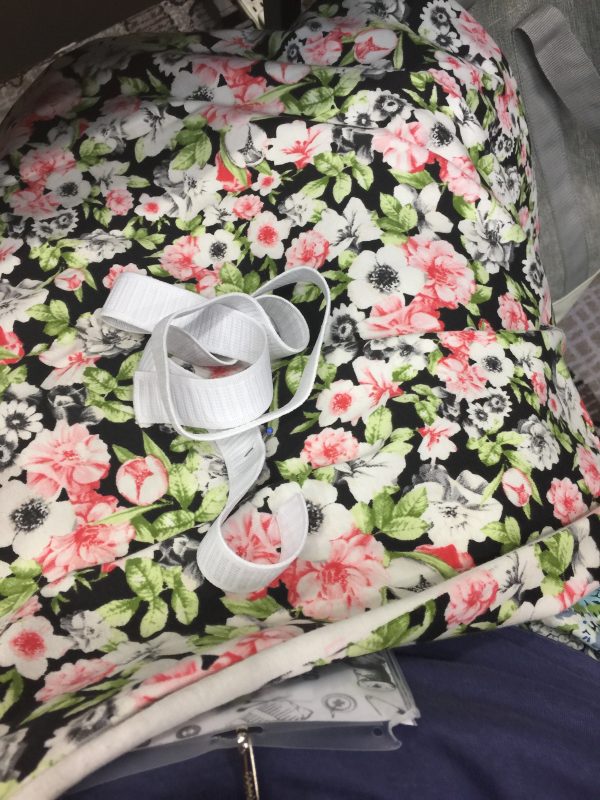
The fabric I chose…other choices were a solid denim look and a blue floral print. Heather Peterson’s Girl Charlee site is here, with a wide range of VERY reasonably priced knits. This particular fabric is still available as of early July 2018, here, and is only $8.50 a yard! It’s a lighter t-shirt weight skirt (so not too heavy for a full skirt) and is soft and comfy.
Owner Heather Peterson showed some of the fun projects she has made and gave us tips for sewing on knits. For those who don’t have a serger, even the most basic sewing machines have an overlock stitch that you can use to whip up these fun things on your domestic machine. What I learned: don’t be afraid of knits! You can do it!
And on the screen behind her, tips:
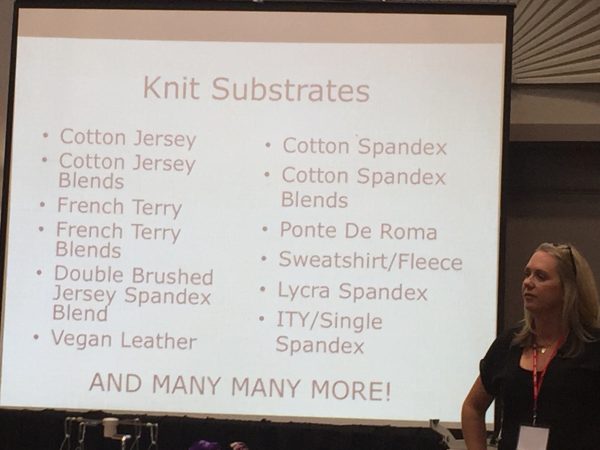
Different types of knits….I had never heard of Vegan Leather….but it looks leather-ish and it actually stretches! I don’t think leather leggings are in my future, but maybe this might work on a quilt….hmmm…….
The ladies who DID make the pencil skirt wore them and fell in love–the entire time I was thinking “I wish I had Ashley’s (DIL) measurements” because this project was ideal for her. When I showed very petite Ashley the pattern provided (here) she was delighted and said “OMG, a pencil skirt that would actually FIT!” The pattern has you start with your measurements, then subtract a bit, calculate the length, and presto, nearly instant skirt. I used the full yard of fabric to make a nearly ankle-length skirt. I didn’t have time to be afraid…we had to work FAST, so I serged up the side seams, serged the elastic (my first time ever doing that!) to the top, then switched over to the cover-stitch machine to stitch down the elastic and hem the skirt.
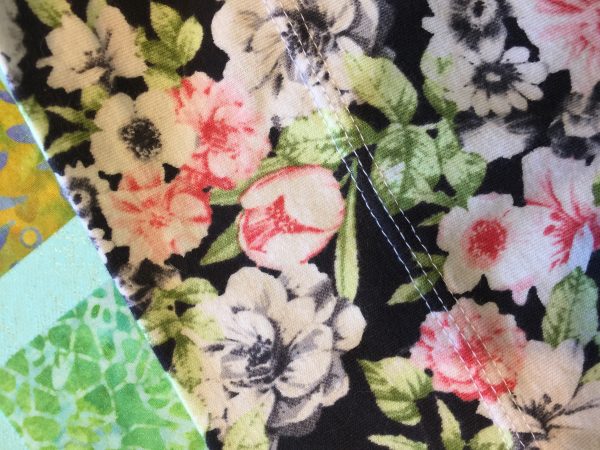
The hem of my skirt. I’ve never used a cover stitch machine before–I love the look of this three-needle hem. On a domestic machine, you can simulate the look of a cover stitch machine (or setting on a serger) by using a twin needle. The bobbin thread zig-zagging on the bottom side gives stretch to the hem, which means the threads don’t break.
After the summit I did some noodling around on the internet: the one issue I had was the fabric curling at the top edge of the hem. Terial Magic would take care of that by stiffening the edge, but there is also stuff called wash-away tape that is 1/4″ wide. That, placed on the cut edge, would hold the hem in place AND keep it from curling (which it does between the pins). Thanks to Heather’s workshop I’m determined to take the fabric I bought to make leggings 2-4 years ago will be MADE UP into leggings this summer! I’m not afraid any more!
Back to Eileen Roche– her company prints your designs (similar to Spoonflower) on a wide range of base goods (cottons, knits, poly, etc). But she also offers software that works on PCs (sorry, not on Macs which is what I have) that helps you design repeats. I could see having a lot of fun with this!
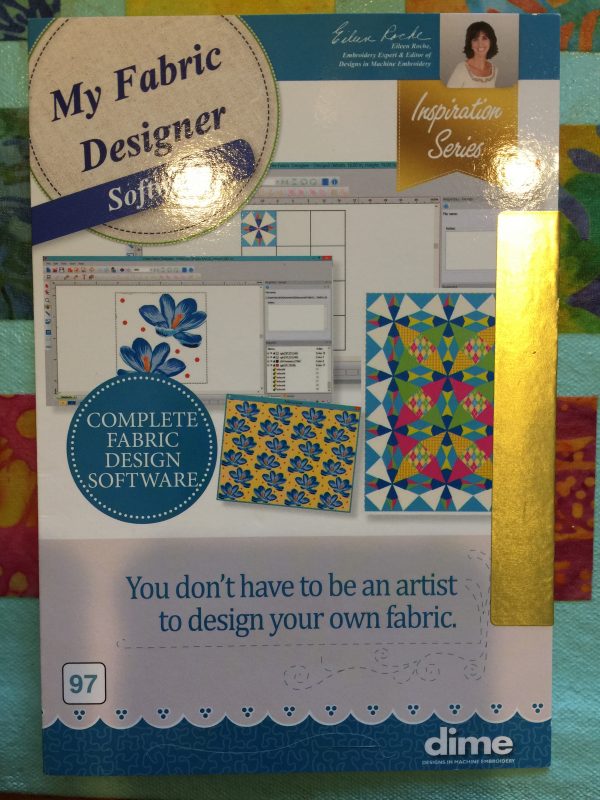
Here’s the print fabric website: https://www.myfabricdesigns.com and here’s where you find the software: https://www.inspiredbydime.com/inspiration-software/my-fabric-designer/
Although I’ve returned to earth after the rush of the Summit, just revisiting these photos has brought back what a great week this was. A TON of good stuff packed into 3 full days!

